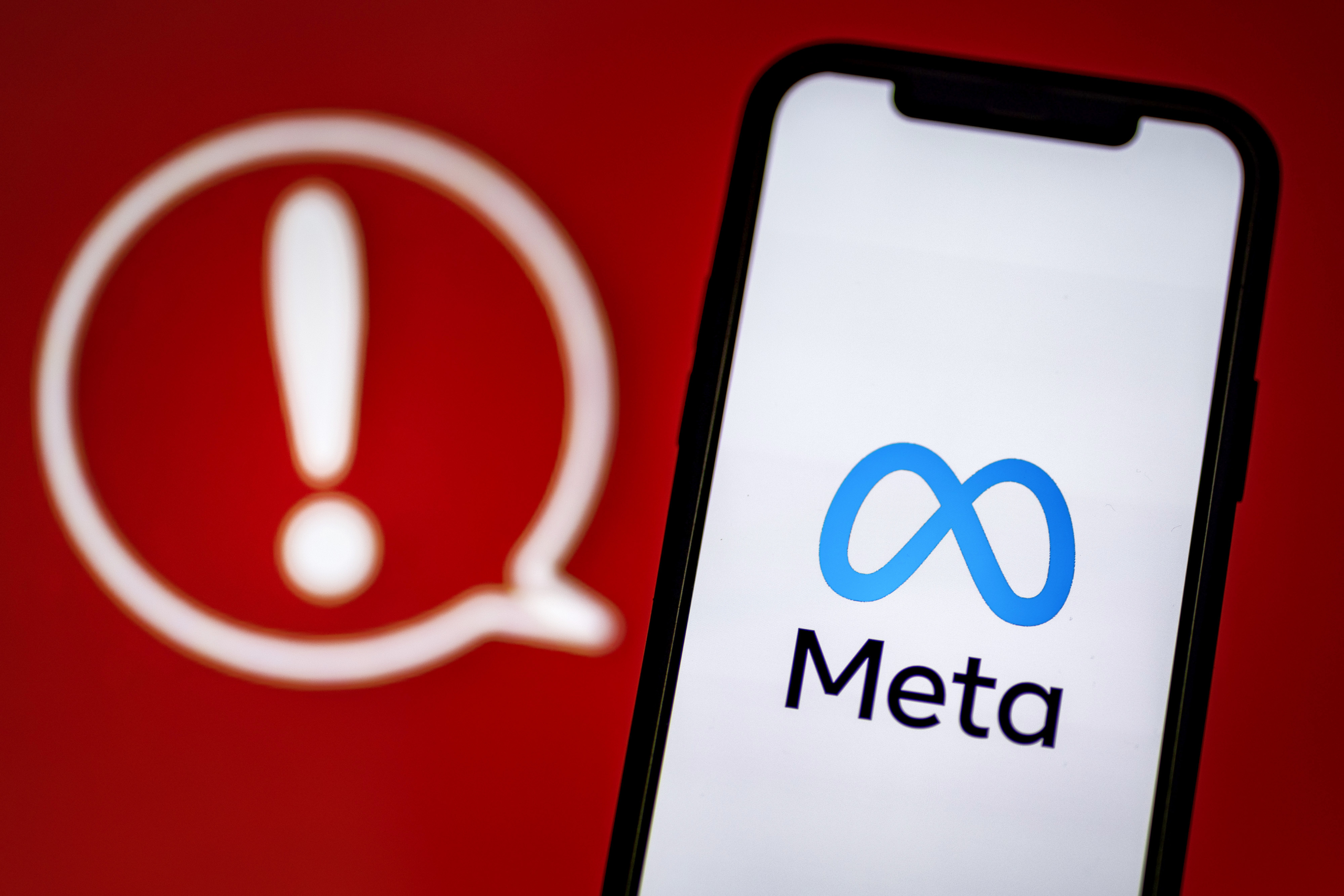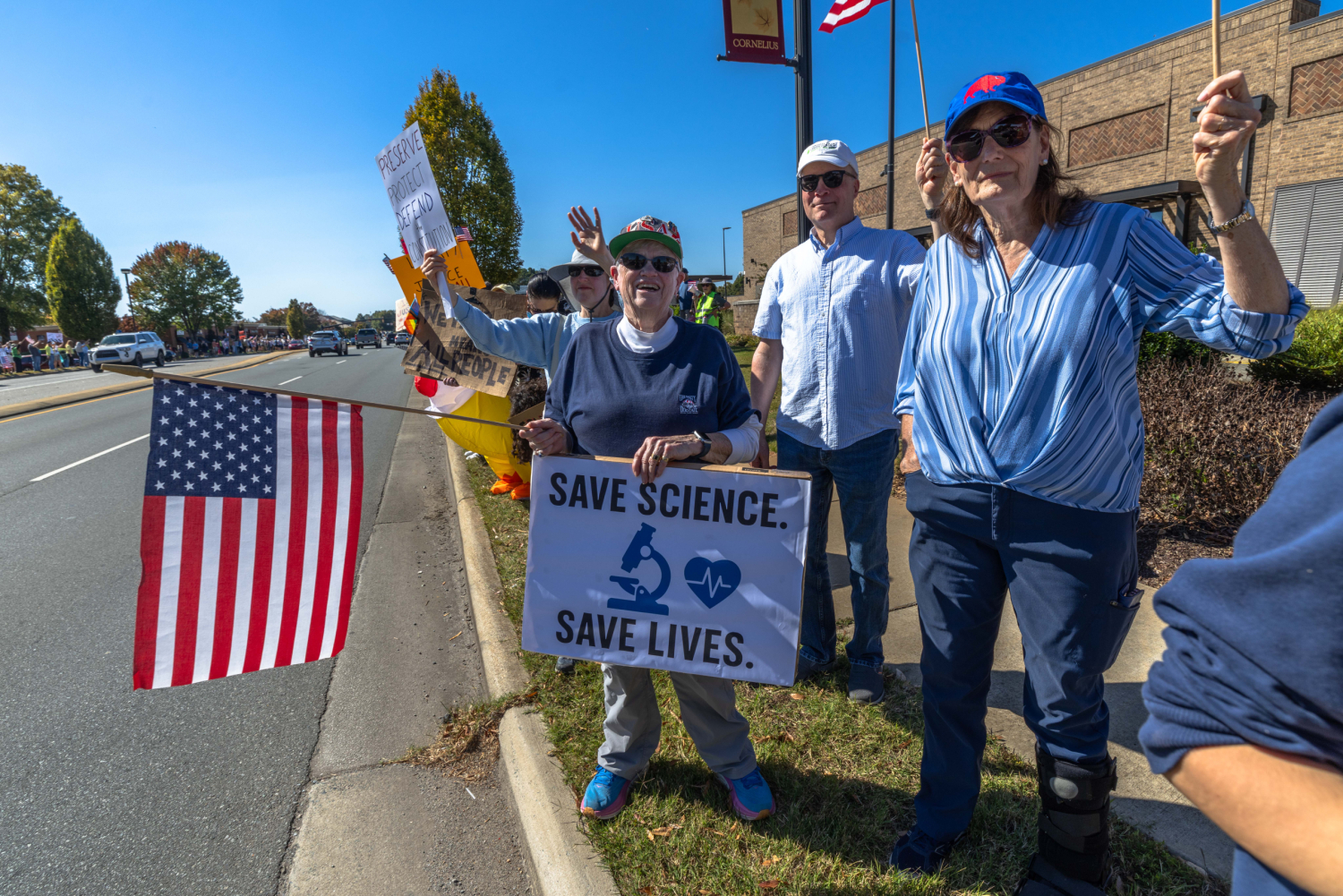Thought of the Day

Be not afraid of growing slowly, be afraid only of standing still.


Be not afraid of growing slowly, be afraid only of standing still.

BEIJING (AP) — China on Sunday accused the U.S. National Security Agency of carrying out cyberattacks on its national time center following an investigation, saying any damage to related facilities could have disrupted network communications, financial systems and power supply.
The Ministry of State Security alleged in a WeChat post that the U.S. agency had exploited vulnerabilities in the messaging services of a foreign mobile phone brand to steal sensitive information from devices of the National Time Service Center’s staff in 2022. It did not specify the brand.
The U.S. agency also used 42 types of “special cyberattack weapons” to target the center’s multiple internal network systems and attempted to infiltrate a key timing system between 2023 and 2024, it said.
It said it had evidence but did not provide it in the post.
It said the time center is responsible for generating and distributing China’s standard time, in addition to providing timing services to industries such as communications, finance, power, transport and defense. It had provided guidance to the center to eliminate the risks.
“The U.S. is accusing others of what it does itself, repeatedly hyping up claims about Chinese cyber threats,” it said.
Western governments in recent years have alleged hackers linked to the Chinese government have targeted officials, journalists, corporations and others. The ministry’s statement could fuel tensions between Washington and Beijing, on top of trade, technology and Taiwan issues.
The U.S. Embassy did not immediately comment.

By MARK SCOLFORO Associated Press
Sam Rivers, the bass player in the nu metal band Limp Bizkit, died on Saturday, according to social media posts by his band mates.
The band did not disclose where Rivers died or the circumstances, but praised him as “pure magic” and “the soul in the sound.”
“From the first note we ever played together, Sam brought a light and a rhythm that could never be replaced,” they wrote in a group Instagram post. “His talent was effortless, his presence unforgettable, his heart enormous.”
Fred Durst, the band’s front man and lead vocalist, posted a video Sunday morning that recounted how they met at a club in Jacksonville Beach, Florida, and went on to music stardom and performances around the globe. Durst said he has shed “gallons and gallons of tears since yesterday.”
“He really did have an impact on the world and his music and his gift is the one that’s going to keep on giving,” Durst said. “I just love him so much.”
Rivers, 48, had spoken of heavy drinking that had caused liver disease. He left the band in 2015 and received a liver transplant before reuniting with Limp Bizkit three years later.
Limp Bizkit has scheduled a tour of Central and South America to begin in Mexico City in late November.
Durst said he and Rivers shared a love of grunge music, naming the bands Mother Love Bone, Alice in Chains and Stone Temple Pilots.
“He had this kind of ability to pull this beautiful sadness out of the bass that I’d never heard,” Durst said, calling Rivers “so talented I can’t explain.”
Limp Bizkit, with roots in Jacksonville, Florida, emerged in the late 1990s with a sound that melds altenative rock, heavy metal and rap.
Their off-the-wall sense of humor is reflected in the titles of their mega-selling 2000 album, “Chocolate Starfish and the Hot Dog Flavored Water,” and a single released last month, “Making Love to Morgan Wallen.”

By DENNIS WASZAK Jr. AP Pro Football Writer
EAST RUTHERFORD, N.J. (AP) — The Carolina Panthers have a three-game winning streak for the first time with Bryce Young as their starting quarterback.
Now, they’ll have to see if Young is healthy enough to go for four in a row.
Young threw a touchdown pass before leaving with an ankle injury, Jaycee Horn had two interceptions of Tyrod Taylor after New York benched Justin Fields and the Panthers beat the winless Jets 13-6 in a snoozefest Sunday.
It marked the first time since Young was drafted with the No. 1 overall pick in 2023 that the Panthers (4-3) have a three-game winning streak with him as their starter — but he was unable to finish this one.
Young went to the locker room late in the third quarter, appearing to walk with a slight limp. The Panthers announced his return was questionable before ruling him out.
“We’re evaluating him for the right ankle,” coach Dave Canales said. “So, we’re taking all the information and we’ll look at him when we get home some more and see where we’re at.”
Andy Dalton took over with 34 seconds left in the quarter when Carolina got the ball back leading 13-3 following a one-handed interception by Horn in the end zone. Young was sacked by Jowon Briggs on his last snap before the Panthers punted.
“He was trying to get out of trouble there,” Canales said of Young. “And he got caught up a little bit.”
Young was 15 of 25 for 138 yards and a touchdown. Dalton was 4 of 7 for 60 yards as the Panthers moved above .500 for the first time this late in a season since they started 5-3 in 2019. It was also Carolina’s first road win this season after dropping its first three.
Xavier Legette had the best game of his career, catching nine passes for 92 yards and a score. And the Panthers’ defense limited the Jets to 220 yards of total offense and had six sacks.
“It was just us staying together as a defense,” said Horn, who has already tied his single-season high with three interceptions. ”We knew coming into the game, we were going to have to play good defense.”
Meanwhile, the Jets (0-7) remained without a victory under Aaron Glenn, who’s the first coach in franchise history to lose the first seven games of his tenure. The Jets also joined the 1996 and 2020 squads as the only teams to start 0-7.
And now they, too, have a major question at quarterback.
With the Jets trailing 13-3 in the third quarter, Fields was benched in favor of Taylor. Fields was 6 of 12 for 46 yards in the first two quarters, unable to do much with the offense with top wide receiver Garrett Wilson out with a knee injury. Glenn then decided to make the change.
“I understand the nature of the quarterback change and, listen, we needed a spark,” Glenn said. “At that time, I felt it was the right time to do it. It was my call.”
The benching came after Fields was just 9 of 17 for 45 yards in the Jets’ 13-11 loss to Denver last Sunday in London, when New York had a franchise-worst minus-10 net yards passing.
Taylor moved the offense with a little more success than Fields, but his two interceptions short-circuited drives. Taylor was 10 of 22 for 126 yards.
Glenn was uncertain who’ll be the starting quarterback next Sunday when the Jets face the Bengals in Cincinnati, saying he needed to take some time to consider the situation and talk with his staff.
“We’ll make the right decision,” Glenn said. “Whatever the decision is, I’m going to go with it and we’re going to move forward.”
On the Jets’ opening drive, Glenn chose to go for it on fourth-and-5 from the Panthers 33 rather than try a 51-yard field goal. But Fields’ throw to Josh Reynolds sailed incomplete for a turnover on downs.
The Panthers took advantage, capping an efficient drive with a 30-yard field goal by Ryan Fitzgerald to go up 3-0.
Fields left briefly in the first quarter to be checked for a head injury after he was walloped by Nick Scott as he slid for a first down on a run. Fields popped back up, but his Jets teammates took exception to the shot — which was penalized for a late hit — and there was pushing and shoving on the field.
Fields, who missed Week 3 with a concussion, was taken into the medical tent and replaced by Taylor. Nick Folk’s 34-yard field goal tied it at 3 a few plays later. Fields was OK and checked back in on the Jets’ next series.
The Panthers took a 10-3 lead with 1:11 left in the opening half when Young ran away from pressure and found Legette for a 3-yard touchdown. The drive was helped by Tetairoa McMillan’s 11-yard catch on fourth-and-3 and a 26-yard catch-and-run by Chuba Hubbard to set up the score.
Panthers: LB Princely Umanmielen left twice with injuries, but returned after both.
Jets: CB Sauce Gardner and RB/KR Kene Nwagwu both left with concussions. … DT Jay Tufele injured a knee and didn’t return.
Panthers: Home against the Buffalo Bills next Sunday.
Jets: Head to Cincinnati to face the Bengals next Sunday.

By MELANIE LIDMAN and SAMY MAGDY Associated Press
TEL AVIV, Israel (AP) — Israel on Sunday struck targets in southern Gaza after saying its troops came under fire from Hamas militants, in the first major test of a U.S.-brokered ceasefire meant to halt more than two years of war. Health officials said at least nine Palestinians were killed.
A senior Egyptian official involved in the ceasefire negotiations said “round-the-clock” contacts were underway to deescalate the situation. The official spoke on condition of anonymity because he wasn’t authorized to speak to reporters.
Israeli Prime Minister Benjamin Netanyahu directed the military to take “strong action” against any ceasefire violations but didn’t threaten to return to war.
Israel’s military said that militants fired at troops in areas of Rafah city that are Israeli-controlled according to agreed-upon ceasefire lines. No injuries were reported. The military said Israel responded with airstrikes and artillery.
Hamas, which continued to accuse Israel of multiple ceasefire violations, said communication with its remaining units in Rafah had been cut off for months and “we are not responsible for any incidents occurring in those areas.”
The Palestinian group also said that talks to launch the second phase of ceasefire negotiations have begun.
An Israeli airstrike killed at least six Palestinians in central Gaza, health officials said. It hit a makeshift coffeehouse on the coastal side of Zawaida town, according to Gaza’s Health Ministry, part of the Hamas-run government.
Another Israeli strike killed at least two people near the Al-Ahly soccer club in the Nuseirat refugee camp, the ministry said. The strike hit a tent and wounded eight others, said Awda hospital, which received the casualties.
A third strike hit a tent in the Muwasi area of Khan Younis in the south, killing at least one person, according to Nasser Hospital.
An Israeli military official told journalists there had been three incidents Sunday, two in southern Gaza and one in the north, and noted that the update was partial for now.
Israel identified the remains of two hostages released by Hamas overnight.
Netanyahu’s office said the bodies belonged to Ronen Engel, a father from Kibbutz Nir Oz, and Sonthaya Oakkharasri, a Thai agricultural worker from Kibbutz Be’eri.
Both were believed to have been killed during the Hamas-led attack on southern Israel on Oct. 7, 2023, which sparked the war. Engel’s wife, Karina, and two of his three children were kidnapped and released in a ceasefire in November 2023.
Hamas in the past week has handed over the remains of 12 hostages.
Hamas’ armed wing, the Qassam Brigades, said that it had found the body of a hostage and would return it on Sunday “if circumstances in the field” allowed. It warned that any escalation by Israel would hamper search efforts.
Israel on Saturday pressed Hamas to fulfill its ceasefire role of returning the remains of all 28 deceased hostages, saying the Rafah border crossing between Gaza and Egypt would stay closed “until further notice.”
Hamas says the war’s devastation and Israeli military control of certain areas of Gaza have slowed the handover. Israel believes Hamas has access to more bodies than it has returned.
Israel has released 150 bodies of Palestinians back to Gaza, including 15 on Sunday, according to Gaza’s Health Ministry. Israel has neither identified the bodies nor said how they died. The ministry posts photos of bodies on its website to help families attempting to locate loved ones. Some are decomposed and blackened. Some are missing limbs and teeth.
Only 25 bodies have been identified, the Health Ministry said.
After Israel and Hamas exchanged 20 living hostages for more than 1,900 Palestinian prisoners and detainees, the handover of remains is a major issue in the ceasefire’s first phase. A major scale-up of humanitarian aid is the other central issue.
Hamas said talks with mediators on starting the ceasefire’s second phase have begun. The next stages are expected to focus on disarming Hamas, Israeli withdrawal from additional areas it controls in Gaza, and future governance of the devastated territory.
Hamas spokesman Hazem Kassem said late Saturday that the second phase of negotiations “requires national consensus.” He said Hamas has begun discussions to “solidify its positions.”
The U.S. plan proposes the establishment of an internationally backed authority to run Gaza.
Kassem reiterated that Hamas won’t be part of the ruling authority in a postwar Gaza. He called for the prompt establishment of a body of Palestinian technocrats to run day-to-day affairs.
For now, “government agencies in Gaza continue to perform their duties, as the (power) vacuum is very dangerous,” he said.
The Rafah crossing was the only one not controlled by Israel before the war. It has been closed since May 2024, when Israel took control of the Gaza side.
A fully reopened crossing would make it easier for Palestinians to seek medical treatment, travel or visit family in Egypt, home to tens of thousands of Palestinians.
On Sunday, the Palestinian Authority’s Interior Ministry in Ramallah announced procedures for Palestinians wishing to leave or enter Gaza through the Rafah crossing. For those who want to leave, Palestinian Embassy staff from Cairo will be at the crossing to issue temporary travel documents for entry into Egypt. Palestinians who wish to enter Gaza will need to apply at the embassy.
The Israel-Hamas war has killed more than 68,000 Palestinians, according to Gaza’s Health Ministry, which doesn’t distinguish between civilians and combatants in its count. The ministry maintains detailed casualty records that are seen as generally reliable by U.N. agencies and independent experts. Israel has disputed them without providing its own toll.
Thousands more people are missing, according to the Red Cross.
Hamas-led militants killed around 1,200 people, mostly civilians, and abducted 251 people in the attack that sparked the war.
___
Samy Magdy reported from Cairo.

By THOMAS ADAMSON Associated Press
PARIS (AP) — In a brazen, seven-minute strike, thieves used a basket lift to reach the Louvre on Sunday morning and, as tourists were already inside, forced a window, smashed display cases and fled with jewels of “inestimable value,” France’s interior minister said.
The world’s most visited museum closed for the day as police sealed gates and ushered visitors out during the investigation.
“A robbery took place this morning at the opening of the Louvre Museum,” Culture Minister Rachida Dati wrote on X. The museum cited “exceptional reasons” for the closure. No injuries were reported.
Around 9:30 a.m. several intruders forced open a window, stole jewels from vitrines and escaped on two-wheelers, according to the Interior Ministry. It said forensic work is underway and a precise inventory of the stolen objects is being compiled, adding that the items have “inestimable” historical value. Dati and Nuñez were on site with museum leadership.
Video from the scene showed confused tourists being ushered out of the glass pyramid and surrounding courtyards as officers shut the iron gates and closed nearby streets along the Seine.
Interior Minister Laurent Nuñez called it a “major robbery,” saying the intruders entered from the outside using a basket lift. He said on France Inter radio that the heist took seven minutes and the thieves used a disc cutter to slice through the panes. He said it was “manifestly a team that had done scouting.”
The heist occurred in the Galerie d’Apollon, a vaulted hall in the Denon wing that displays part of the French Crown Jewels beneath a ceiling painted by King Louis XIV’s court artist, according to the ministry.
French daily Le Parisien reported the thieves entered via the Seine-facing facade, where construction is underway, and used a freight elevator to reach the gallery. After breaking windows, they reportedly took nine pieces from the jewelry collection of Napoleon and the Empress. One stolen jewel was later found outside the museum, the paper reported, adding that the item was believed to be Empress Eugénie’s crown and that it had been broken.
Security around marquee works remains tight. The Mona Lisa is protected by bulletproof glass and a custom high-tech display system as part of broader anti-theft measures across the museum.
Staffing and protection have been flashpoints at the Louvre. The museum delayed opening during a June staff walkout over overcrowding and chronic understaffing. Unions have warned that mass tourism strains security and visitor management.
It wasn’t immediately clear whether staffing levels played any role in Sunday’s theft.
In January, President Emmanuel Macron announced a decadelong “Louvre New Renaissance” plan — roughly €700 million to modernize infrastructure, ease crowding and give the Leonardo da Vinci masterpiece its own dedicated gallery by 2031 — but workers say relief has been slow to reach the floor.
The theft, less than half an hour after doors opened, echoes other recent European museum raids.
In 2019, thieves smashed vitrines in Dresden’s Green Vault and carried off diamond-studded royal jewels worth hundreds of millions of euros. In 2017, burglars at Berlin’s Bode Museum stole a 100-kilogram (220-pound) solid-gold coin. In 2010, a lone intruder slipped into Paris’s Museum of Modern Art and escaped with five paintings, including a Picasso.
The Louvre has a long history of thefts and attempted robberies. The most famous came in 1911, when the Mona Lisa vanished from its frame, stolen by Vincenzo Peruggia, a former worker who hid inside the museum and walked out with the painting under his coat. It was recovered two years later in Florence — an episode that helped make Leonardo da Vinci’s portrait the world’s best-known artwork.
Home to more than 33,000 works spanning antiquities, sculpture and painting — from Mesopotamia, Egypt and the classical world to European masters — the Louvre’s star attractions include the Mona Lisa, the Venus de Milo and the Winged Victory of Samothrace. The museum can draw up to 30,000 visitors a day.

By DAN GREENSPAN Associated Press
LOS ANGELES (AP) — Seth Jarvis scored 1:45 into overtime and the Carolina Hurricanes extended their undefeated start to the season to five games despite giving up a three-goal lead in a 4-3 win over the Los Angeles Kings on Saturday night.
Jarvis netted his sixth goal of the season, capitalizing on a fortunate bounce after Kings defenseman Brandt Clarke blocked Sebastian Aho’s shot, scoring into an open net with goalie Anton Forsberg unable to get back in position.
Jordan Staal had two goals, Jesperi Kotkaniemi also scored, and Brandon Bussi made 25 saves for the Hurricanes.
Kevin Fiala tied it midway through the third period for the Kings, who have lost four straight. Trevor Moore and Andrei Kuzmenko also scored, and Forsberg made 36 saves.
The Hurricanes went up 3-0 early in the second period before the Kings responded. Moore got Los Angeles on the board and looked to have picked up a second less than a minute later, but it was waived off for goaltender interference.
Kuzmenko cut it to 3-2 on the power play with 3:56 left in the period, the first conceded by Carolina this season in 10 road penalty kills.
Carolina had scored two goals in the first period coming into the night. Staal doubled that in the opening 3:58, including scoring 12 seconds into the game when William Carrier found him alone at the back post for his 300th career goal.
Staal joined his brother Eric in the 300-goal club, making them the fourth brother pair to accomplish it along with Maurice and Henri Richard, Bobby and Dennis Hull, and Brent and Brian Sutter.
Hurricanes defenseman Shayne Gostisbehere played 4:06 in the first period before exiting the game with a lower-body injury, a blow to a group already missing Jaccob Slavin with an injury.
Carolina head coach Rod Brind’Amour said Gostisbehere “said he tweaked something.”
Hurricanes: Visit Vegas on Monday night.
Kings: Visit St. Louis on Tuesday night.

By CHRISTINA LARSON AP Science Writer
The Orionids — one of two major meteor showers caused by remnants from Halley’s comet — will peak with the arrival of a new moon, providing an excellent opportunity to see shooting stars without interference from moonlight.
During Tuesday morning’s peak, expect to see up to 20 meteors per hour in ideal viewing conditions, said Thaddeus LaCoursiere, planetarium program coordinator at the Bell Museum in St. Paul, Minnesota. Viewing lasts until Nov. 7.
“Weather permitting, it will be a great show,” LaCoursiere said.
Halley’s comet passes near Earth every 75 years. Debris left by the comet leads to two major meteor showers every year.
“Sometimes the Orionids leave trains, these bright lingering streak in the sky,” LaCoursiere said.
Here’s what to know about the Orionids and other meteor showers.
As the Earth orbits the sun, several times a year it passes through debris left by passing comets and sometimes asteroids. The source of the Orionids is debris from Halley’s comet.
When these fast-moving space rocks enter Earth’s atmosphere, the debris encounters new resistance from the air and becomes very hot, eventually burning up.
Sometimes the surrounding air glows briefly, leaving behind a fiery tail — the end of a “shooting star.”
You don’t need special equipment to see the meteor showers that flash across the sky annually, just a spot away from city lights.
The best time to watch a meteor shower is typically after midnight, or in the early pre-dawn hours, when there’s usually less interference from moonlight.
Competing sources of light — such as a bright moon or artificial glow from lights on the ground — are the main obstacles to a clear view of meteors. Cloudless nights when the moon wanes smallest provide optimal viewing opportunities.
And keep looking up, not down. Your eyes will be better adapted to spot shooting stars if you aren’t checking your phone.
The next major meteor shower, the Southern Taurids, is expected to peak early Nov. 5, when the moon is full.
___
The Associated Press Health and Science Department receives support from the Howard Hughes Medical Institute’s Science and Educational Media Group. The AP is solely responsible for all content.

By BARBARA ORTUTAY AP Technology Writer
Meta is adding parental controls for kids’ interactions with artificial intelligence chatbots — including the ability to turn off one-on-one chats with AI characters altogether — beginning early next year.
But parents won’t be able to turn off Meta’s AI assistant, which Meta says will “will remain available to offer helpful information and educational opportunities, with default, age-appropriate protections in place to help keep teens safe.”
Parents who don’t want to turn off all chats with all AI characters will also be able to block specific chatbots. And Meta said Friday that parents will be able to get “insights” about what their kids are chatting about with AI characters — although they won’t get access to the full chats.
The changes come as the social media giant faces ongoing criticism over harms to children from its platforms. AI chatbots are also drawing scrutiny over their interactions with children that lawsuits claim have driven some to suicide.
Even so, more than 70% of teens have used AI companions and half use them regularly, according to a recent study from Common Sense Media, a nonprofit that studies and advocates for using screens and digital media sensibly.
On Tuesday, Meta announced that teen accounts on Instagram will be restricted to seeing PG-13 content by default and won’t be able to change their settings without a parent’s permission. This means kids using teen-specific accounts will see photos and videos on Instagram that are similar to what they would see in a PG-13 movie — no sex, drugs or dangerous stunts.
Meta said the PG-13 restrictions will also apply to AI chats.
Children’s online advocacy groups, however, are skeptical about Meta’s intentions.
“Meta’s new parental controls on Instagram are an insufficient, reactive concession that wouldn’t be necessary if Meta had been proactive about protecting kids in the first place,” said James Steyer, Common Sense Media founder and CEO. “On top of this, Meta is taking its sweet time, waiting months to implement this new feature at a pivotal moment where every second counts.”
“For too long, this company has put the relentless pursuit of engagement over our kids’ safety, ignoring warnings from parents, experts, and even its own employees.”
Meta AI chatbots, Steyer added, “are not safe for anyone under 18.”
Common Sense Media does not recommend minors use AI chatbots of any kind.

By MIKE PESOLI, MATT BROWN and GARY FIELDS Associated Press
WASHINGTON (AP) — Large crowds of protesters marched and rallied in cities across the U.S. Saturday for “ No Kings ” demonstrations decrying what participants see as the government’s swift drift into authoritarianism under President Donald Trump.
People carrying signs with slogans such as “Nothing is more patriotic than protesting” or “Resist Fascism” packed into New York City’s Times Square and rallied by the thousands in parks in Boston, Atlanta and Chicago. Demonstrators marched through Washington and downtown Los Angeles and picketed outside capitols in several Republican-led states, a courthouse in Billings, Montana, and at hundreds of smaller public spaces.
Trump’s Republican Party disparaged the demonstrations as “Hate America” rallies, but in many places the events looked more like a street party. There were marching bands, huge banners with the U.S. Constitution’s “We The People” preamble that people could sign, and demonstrators wearing inflatable costumes, particularly frogs, which have emerged as a sign of resistance in Portland, Oregon.
It was the third mass mobilization since Trump’s return to the White House and came against the backdrop of a government shutdown that not only has closed federal programs and services but is testing the core balance of power, as an aggressive executive confronts Congress and the courts in ways that protest organizers warn are a slide toward authoritarianism.
In Washington, Iraq War Marine veteran Shawn Howard said he had never participated in a protest before but was motivated to show up because of what he sees as the Trump administration’s “disregard for the law.” He said immigration detentions without due process and deployments of troops in U.S. cities are “un-American” and alarming signs of eroding democracy.
“I fought for freedom and against this kind of extremism abroad,” said Howard, who added that he also worked at the CIA for 20 years on counter-extremism operations. “And now I see a moment in America where we have extremists everywhere who are, in my opinion, pushing us to some kind of civil conflict.”
Trump, meanwhile, was spending the weekend at his Mar-a-Lago home in Florida.
“They say they’re referring to me as a king. I’m not a king,” the president said in a Fox News interview that aired early Friday, before he departed for a $1 million-per-plate MAGA Inc. fundraiser at his club.
A Trump campaign social media account mocked the protests by posting a computer-generated video of the president clothed like a monarch, wearing a crown and waving from a balcony.
In San Francisco hundreds of people spelled out “No King!” and other phrases with their bodies on Ocean Beach. Hayley Wingard, who was dressed as the Statue of Liberty, said she too had never been to a protest before. Only recently she began to view Trump as a “dictator.”
“I was actually OK with everything until I found that the military invasion in Los Angeles and Chicago and Portland — Portland bothered me the most, because I’m from Portland, and I don’t want the military in my cities. That’s scary,” Wingard said.
Tens of thousands of people gathered in Portland for a peaceful demonstration downtown. Later in the day, tensions grew as a few hundred protesters and counterprotesters showed up at a U.S. Immigration and Customs enforcement building, with federal agents at times firing tear gas to disperse the crowd and city police threatening to make arrests if demonstrators blocked streets.
The building has been the site of mostly small nightly protests since June — the reason the Trump administration has cited for trying to deploy National Guard troops in Portland, which a federal judge has at least temporarily blocked.
About 3,500 people gathered in Salt Lake City outside the Utah State Capitol to share messages of hope and healing after a protester was fatally shot during the city’s first “No Kings” march in June.
And more than 1,500 people gathered in Birmingham, Alabama, evoking and the city’s history of protests and the critical role it played in the Civil Rights Movement two generations ago.
“It just feels like we’re living in an America that I don’t recognize,” said Jessica Yother, a mother of four. She and other protesters said they felt camaraderie by gathering in a state where Trump won nearly 65% of the vote last November.
“It was so encouraging,” Yother said. “I walked in and thought, ‘Here are my people.’”
“Big rallies like this give confidence to people who have been sitting on the sidelines but are ready to speak up,” Democratic U.S. Sen. Chris Murphy said in an interview with The Associated Press.
While protests earlier this year — against Elon Musk’s cuts and Trump’s military parade — drew crowds, organizers say this one is uniting the opposition. Top Democrats such as Senate Minority Leader Chuck Schumer and Independent Sen. Bernie Sanders are joining what organizers view as an antidote to Trump’s actions, from the administration’s clampdown on free speech to its military-style immigration raids.
More than 2,600 rallies were planned Saturday, organizers said. The national march against Trump and Musk this spring had 1,300 registered locations, while the first “No Kings” day in June registered 2,100.
“We’re here because we love America,” Sanders said, addressing the crowd from a stage in Washington. He said the American experiment is “in danger” under Trump but insisted, “We the people will rule.”
Republicans sought to portray protesters as far outside the mainstream and a prime reason for the government shutdown, now in its 18th day.
From the White House to Capitol Hill, GOP leaders called them “communists” and “Marxists.” They said Democratic leaders including Schumer are beholden to the far-left flank and willing to keep the government shut to appease those liberal forces.
“I encourage you to watch — we call it the Hate America rally — that will happen Saturday,” said House Speaker Mike Johnson of Louisiana.
“Let’s see who shows up for that,” Johnson said, listing groups including “antifa types,” people who “hate capitalism” and “Marxists in full display.”
Many demonstrators, in response, said they were meeting such hyperbole with humor, noting that Trump often leans heavily on theatrics such as claiming that cities he sends troops to are war zones.
“So much of what we’ve seen from this administration has been so unserious and silly that we have to respond with the same energy,” said Glen Kalbaugh, a Washington protester who wore a wizard hat and held a sign with a frog on it.
New York police reported no arrests during the protests.
Democrats have refused to vote on legislation that would reopen the government as they demand funding for health care. Republicans say they are willing to discuss the issue later, only after the government reopens.
The situation is a potential turnaround from just six months ago, when Democrats and their allies were divided and despondent. Schumer in particular was berated by his party for allowing an earlier government funding bill to sail through the Senate without using it to challenge Trump.
“What we are seeing from the Democrats is some spine,” said Ezra Levin, a co-founder of Indivisible, a key organizing group. “The worst thing the Democrats could do right now is surrender.”
___
Associated Press journalists Lisa Mascaro and Kevin Freking in Washington, Jill Colvin and Joseph Frederick in New York, Jeffrey Collins in Columbia, South Carolina, Hannah Schoenbaum in Salt Lake City, Terry Chea in San Francisco, Chris Megerian in West Palm Beach, Florida, and Bill Barrow in Birmingham, Alabama, contributed.